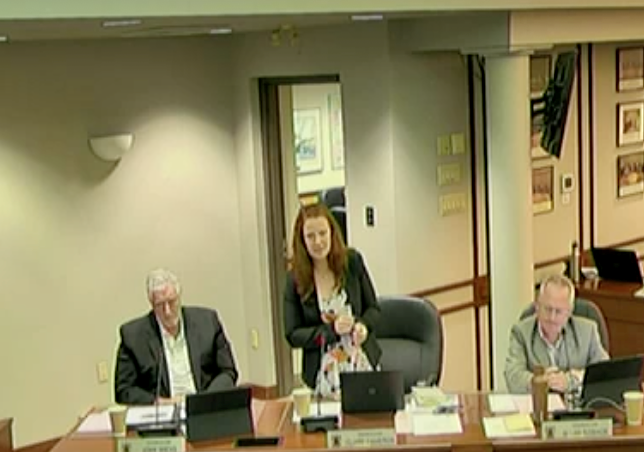
The president of Lake Ontario Express says he has been working on a water link between Niagara and Toronto since 2014, and tried to float the idea with stakeholders in 2018, but he has some obstacles to overcome before turning his idea into reality.
Bruno Caciagli hopes to use the Navy Hall dock as the Niagara-on-the-Lake connection, but has failed so far to receive permission from Parks Canada, or from the City of Toronto to use its harbour, without which, he told council, “there is no project. You will never see me again.”
The benefit to a successful water link is chiefly the time it saves for commuters and visitors to Niagara, he says.
The distance across the lake is 50 kilometres, versus 120 kilometres along the highway, and the time of a ferry crossing is about 40 to 45 minutes, Caciagli told NOTL councillors, with cars and buses taking from one to two hours.
He is predicting 2,100 travellers per day, with 80-passenger hovercrafts or catamarans making 14 trips per day, seven days a week,12 months a year “weather permitting,” at a ticket cost of $25.
He would also like to see the service offer round trips between Toronto and Port Dalhousie, and the Beacon Harbour, as well as NOTL.
He wants to be operational for those coming to Niagara for the Canada Summer Games in 2021.
But Coun. Wendy Cheropita, while saying the idea is “exciting and timely,” asked the question on everybody’s minds: “What are you doing differently to make it a viable business that will be successful?”
She was referring to several efforts in recent decades, from hydrofoils to ocean-type ferries, at a similar price, and some with shuttle service, that failed.
The lake was often too rough, the weather made services unreliable, and the costs prohibitive, although the concept was always a welcome one.
Coun. Gary Burroughs also brought up some of the “serious” problems in the past. He referred to an incident in the late 1990s. A wave washed over a hydrofoil operating from Toronto to Niagara, with a provincial minister of tourism aboard.
The windows broke, soaking the passengers — the tourism promotion wasn’t a success.
Caciagli said he has several factors on his side, including a construction background that has taught him to pay attention to “lessons learned.”
Most important, he said, is that “any type of ferry service has to be coordinated with land transit. It cannot exist by itself.”
The biggest factor to ensure success, he said, is for public transit to connect with ferry dockings, to eliminate the need for parking for commuters and encourage tourists to choose the cross-lake option.
He also spoke of the timely need to reduce vehicles on the road to protect the environment and reduce climate change, “to do something for our children and grandchildren. We have to start some place and one place to start is in the use of our vehicles.”
He told councillors that with support in Niagara, he hopes to make inroads with Toronto and upper levels of government for funding.
“I appreciate the enthusiasm,” said Coun. Clare Cameron, saying she finds the possibility of success “dubious,” and she couldn’t support it without Parks Canada included in the discussions.
Burroughs made a motion to support the proposal in principle, in order to help Caciagli move forward with the project, subject to Parks Canada approval. It passed with only Cameron and Coun. Erwin Wiens opposed.